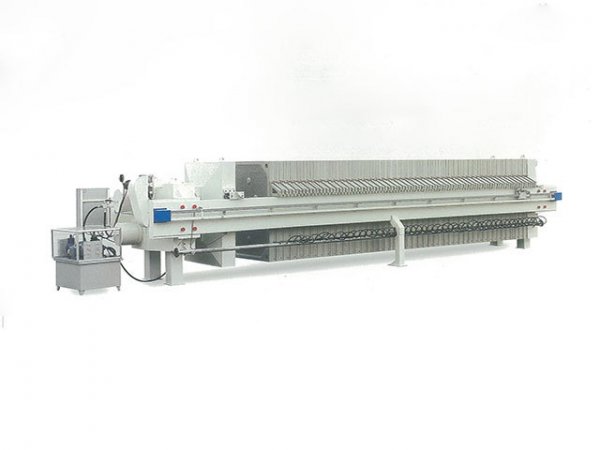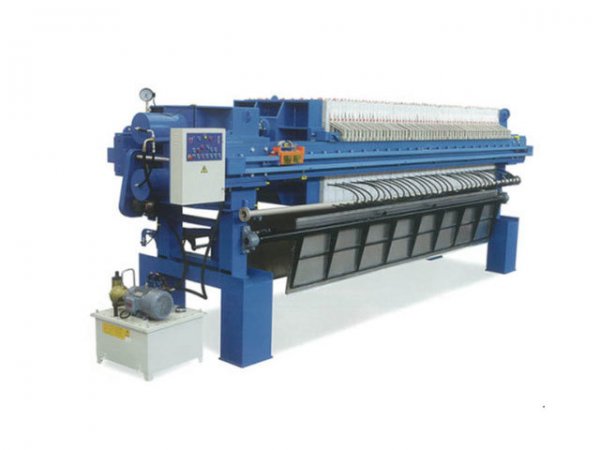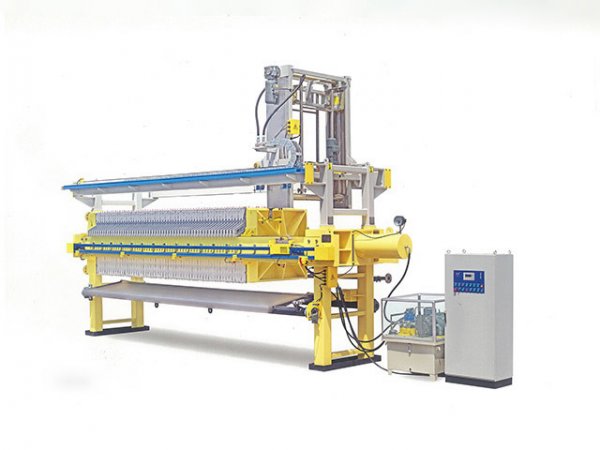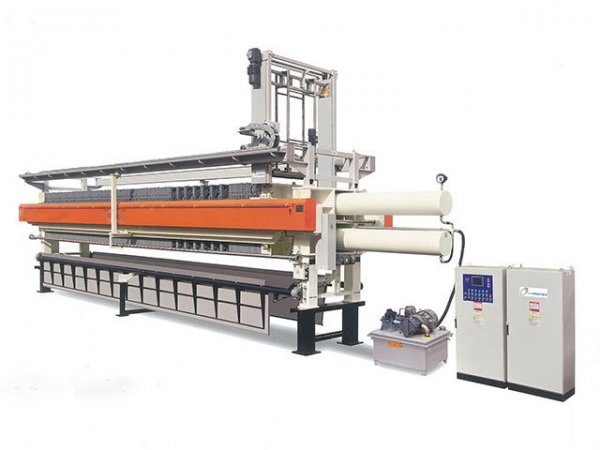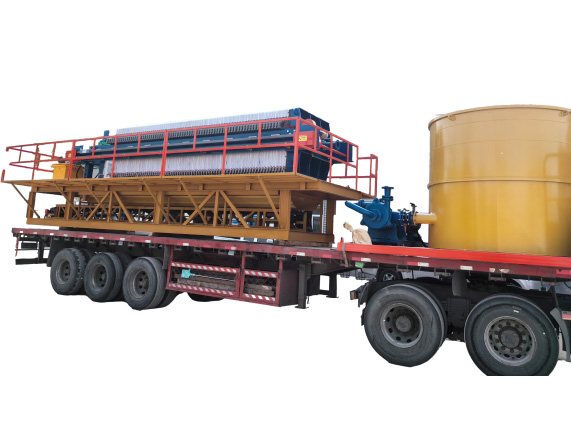NewsDetails
Key Points of Routine Maintenance for Diaphragm Filter Press Filter Plates
author:Shuangcheng time:2025-04-25 17:13:34 Click:181
In the field of industrial solid-liquid separation, diaphragm filter presses have become the preferred equipment for many enterprises due to their efficient filtration capabilities. As the core component, filter plates directly influence the working efficiency and service life of the filter press. However, even high-performance diaphragm filter press filter plates may experience issues such as reduced filtration efficiency and damage if they lack scientific and reasonable routine maintenance. Therefore, mastering the key points of routine maintenance for diaphragm filter press filter plates is of great significance for ensuring stable equipment operation, reducing production costs, and enhancing enterprise economic benefits.
I. Basic Understanding of Diaphragm Filter Press Filter Plates
Diaphragm filter press filter plates consist of a filter plate body, an elastic diaphragm layer, a feed inlet, and a filtrate outlet. During the operation of the filter press, material enters the filter chamber through the feed inlet. Under pressure, the liquid passes through the filter cloth and is discharged through the filtrate outlet, while the solid is retained in the filter chamber. The presence of the diaphragm layer enables further reduction of the filter cake moisture content through squeezing in the later stage of filtration, achieving efficient solid-liquid separation. It is precisely because of this unique structure and working principle that diaphragm filter press filter plates play a crucial role in industrial production, making routine maintenance particularly necessary.
II. Key Point of Routine Maintenance: Cleaning
Cleaning is a fundamental and crucial part of the routine maintenance of diaphragm filter press filter plates. After each filtration operation, it is essential to promptly clean the residual material on the filter plate surface and in the filter chamber. If the residual material is not removed in time, it will not only affect the next filtration effect but may also cause wear to the filter plate sealing surface due to material caking, leading to poor sealing between filter plates and liquid leakage.
When cleaning, soft tools such as brushes or sponges should be used to avoid scratching the filter plate surface. For stubborn caked material, it can be soaked in warm water first to soften it before cleaning. Additionally, the filter cloth should be regularly cleaned and replaced, as clogged filter cloths can also affect filtration efficiency and filter plate performance. Only by keeping the filter plates and filter cloths clean can the diaphragm filter press filter plates remain in good working condition.
III. Key Point of Routine Maintenance: Inspection
Regular inspection is an important means to promptly identify potential problems with diaphragm filter press filter plates. Firstly, check the filter plate surface for cracks, damage, or deformation. Filter plates are prone to local stress concentration under long-term high-pressure working conditions, which can lead to crack formation. Once minor cracks are found on the filter plate, they should be replaced promptly to prevent crack expansion and filter plate rupture, which can affect the operation of the entire filter press.
Secondly, check the diaphragm layer for damage, bulging, or other issues. The integrity of the diaphragm layer directly affects the squeezing effect. If the diaphragm layer is damaged, efficient squeezing cannot be achieved, reducing filtration quality. Additionally, check the feed inlet, filtrate outlet, and other parts for blockages, as well as whether the sealing gaskets between filter plates are aged or worn. Only through comprehensive and meticulous inspection can potential problems be nipped in the bud.
IV. Key Point of Routine Maintenance: Preservation
Scientific preservation can effectively extend the service life of diaphragm filter press filter plates. When the filter plates are idle, they should be neatly stacked to avoid excessive stacking causing deformation due to pressure. At the same time, the filter plates should be protected from prolonged exposure to sunlight or damp environments to prevent material aging.
For the movable parts of the filter plates, such as the connecting shafts between filter plates and the pressing devices, lubricating oil should be applied regularly to ensure smooth operation and reduce part damage caused by excessive friction. Additionally, the pressure system of the filter press should be periodically inspected and calibrated to ensure that the pressure parameters remain within a reasonable range, preventing damage to the filter plates due to abnormal pressure.
V. Common Problems and Solutions
In the use of diaphragm filter press filter plates, some problems are inevitable. For example, liquid leakage between filter plates may be caused by sealing surface wear, as well as folded filter cloths or misaligned filter plates. In this case, the filter cloth position needs to be readjusted to ensure proper alignment of the filter plates, and the sealing gaskets should be checked for replacement.
If there is a significant decrease in filtration speed, in addition to cleaning the filter cloth and filter plates, it is also necessary to check for issues such as insufficient feed pressure or blocked filter plates. Corresponding measures should be taken based on different causes, such as adjusting the feed pressure or unblocking the blocked areas. Timely handling of common problems can further ensure the normal operation of diaphragm filter press filter plates.
VI. Summary of Maintenance Points and Emphasis on Importance
The routine maintenance of diaphragm filter press filter plates covers various aspects such as cleaning, inspection, and preservation, and each point is crucial. Proper cleaning can maintain the filtration performance of the filter plates; meticulous inspection can promptly identify and resolve potential problems; and scientific preservation can extend the service life of the filter plates. Only by implementing these maintenance points can the diaphragm filter press filter plates continue to operate efficiently, safeguarding the production activities of enterprises.
Enterprises should attach importance to the routine maintenance of diaphragm filter press filter plates, develop a comprehensive maintenance plan, and provide professional training for operators to enable them to master the correct maintenance methods. In this way, the performance advantages of diaphragm filter presses can be fully utilized, equipment failure rates can be reduced, production efficiency can be improved, and a win-win situation for both economic and environmental benefits can be achieved for enterprises.
 Recommended Products
Recommended Products
 Contact us
Contact us
—— Contact:Manager
—— Tel:+86 16632826789
—— Email:sales@hbscfilterpress.com
—— Url:http://www.hbscfilterpress.com
—— Address:West Zone of Economic Development Zone, Fucheng County, Hengshui City, Hebei Province



